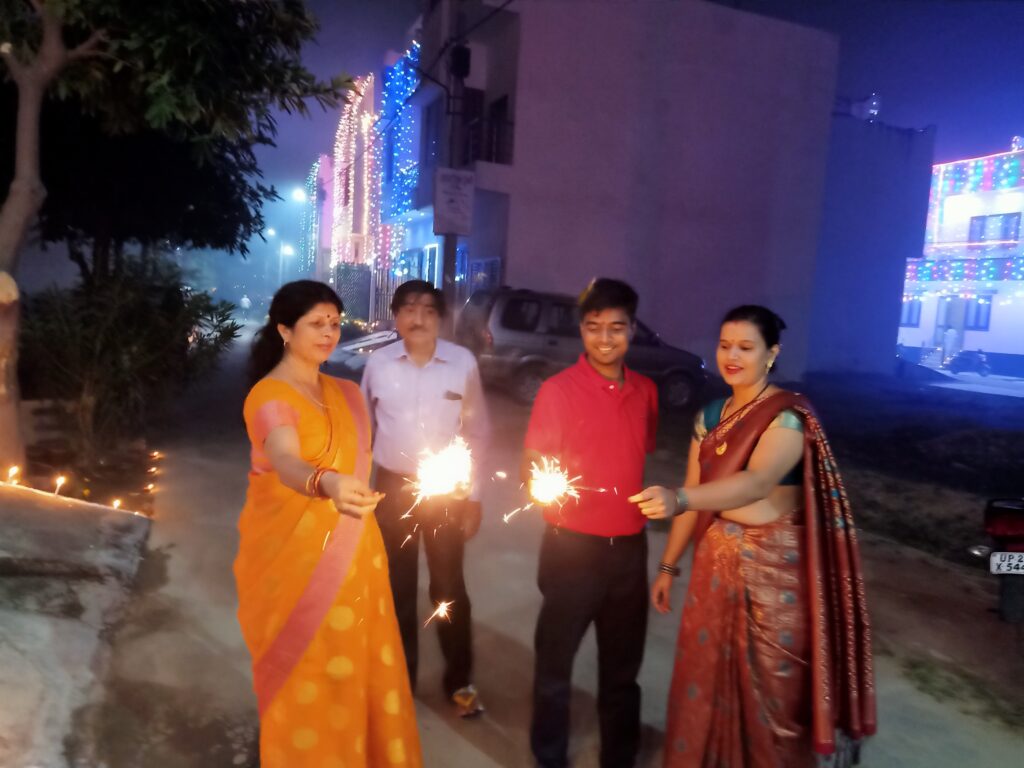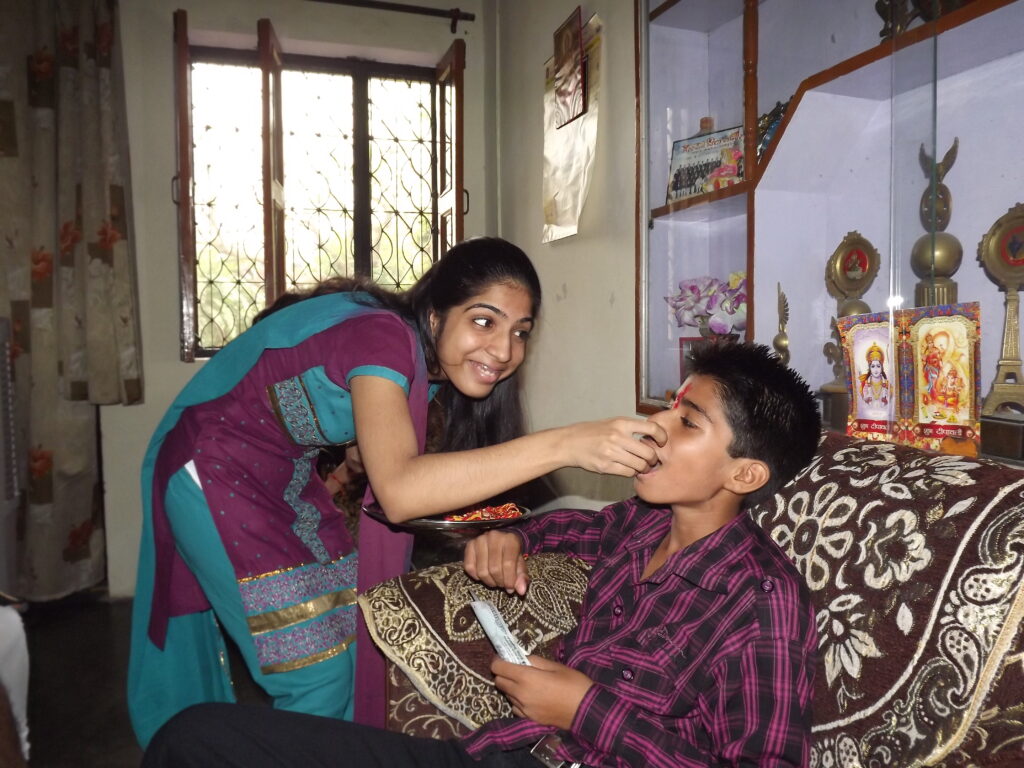Due to the prevalence of diverse religions and communities, India has a huge number of festivals celebrated throughout the year. Every month the country has some festival to celebrate. These festivals are a unique way to know about the diverse culture and traditions that exist in this subcontinent. This is an experience that is possible only in India.
While festivals of different religions are celebrated around the year, it is the second half of the year that can be called as the festive season of the nation. As the country heaves a sigh of relief from the summer and monsoon months and steps into the autumn season, the festive mood sets in. Starting from the end of September, this festive season lasts for the remaining part of the year ending with Christmas eve. Here is a tour through this wonderful festive season of India:
Sharad Navratri
Navratri is a grand celebration of the people of the Hindu community. The festival takes place in the autumn months of September and October. Navratri is a Sanskrit term which means Nine Nights. It is a celebration to honour the divine feminine. In Bengal and Assam, the festival is popular by the name of Durga Puja, where the Goddess Durga is worshipped for nine long days.
Similar to Navratri four other festivals are held at different times of the year. Interestingly those are also called Navratri. However, the festival held in the autumn season is considered the most important and is known as the Sharad Navratri.
Sharad Navratri is a festival celebrated all over the country. However, every region celebrates it in their unique way. While some regions celebrate with fasting, others consider it as a time of dancing and feasting. The fasting is done for nine days during which people abstain from consuming any non-vegetarian food items, alcohol and even some spices.
While Gujarat celebrates Navratri with the popular Garba dance form, Assam and Bengal worship goddess Durga. The rituals are performed grandly in public, and the celebration includes plays, fairs and other fun activities.
Importance Of The Festival
Those nine days are dedicated to the different aspects of the feminine principle. It is a time of the year when women power is celebrated and worshipped by everyone. The first third of the festival is generally dedicated to the worship of goddess Durga, the second third is for goddess Lakshmi and the final part is to offer prayers to goddess Saraswati.
On the eighth or ninth day, a Kanya Puja is also held in which young girls are dolled up as goddesses and offerings are made to them.
The festival is also about fighting against our demons known as anger, lust, greed, guilt, attachment, ego, fear, jealousy, hatred, and fear.
Dussehra
The tenth or the final day is the focal point of the festival. Known as Dussehra, the tenth day is the celebration of good over evil, where goddess Durga triumphs over the demon Mahisasura and Lord Rama ends the evil king Ravana. The northern part of the country celebrates Ram Leela (Play of Rama), which is a major attraction of this festival. In many regions, large effigies of Ravana are burned as a sign of ending the evil. Durga Puja ends with an elaborate procession where the idols of the Goddess are taken for immersion.
This is a time of the year when the whole country comes together to celebrate for 10 long days which includes various rituals, and multiple activities for people to enjoy.
Diwali
20 days after the Navratri comes to another grand celebration of the followers of Hinduism. This is a festival celebrated all over India and even in some foreign lands. It is a beautiful festival of lights and the sight is truly a magical and brilliant one. The celebration includes lighting up the home with earthen lamps and other beautiful lights. It is usually held in October or November, depending on the Lunar Calendar.

The celebration starts with Dhanteras followed by Choti Diwali and finally Diwali.
Dhanteras
This marks the beginning of the five-day festival. It is celebrated for better wealth and prosperity. Buying precious utensils and jewellery is an important part of Dhanteras. People purchase gold and silver jewellery for the women of the house. It is a way to offer prayers to the Goddess Lakshmi who symbolizes wealth and good fortune.
Choti Diwali
Choti Diwali is celebrated with morning prayers which are followed by festivities. Many people believe in taking the Holy bath on this day. The bath is taken in the belief that going to hell after death can be avoided by doing it. The process involves applying the sesame oil all over the body and then taking a freshwater bath. This is believed to purify a person and his soul. In many regions, the Holy Bath is taken in the morning of Diwali also.
Significance of Diwali Celebrations
The Festival of Lights is celebrated to honour Lord Rama. He is believed to the seventh incarnation of God Vishnu. It is believed that on this auspicious day Lord Rama had returned home to Ayodhya after spending 14 years in exile. He had also won the war against the demon Ravana and saved his wife Sita.
The homes are lit brightly to glorify the win of good over evil. In the evening the Goddess Lakshmi is worshipped. It is believed on this day the Goddess walks the earth and enters the houses which are pure, clean and bright.
In the southern states of India, the celebrations are for a slightly different reason. Here the celebration is about the win of Lord Krishna over a powerful king of Assam, known as Asura Naraka. The Asura was believed to have imprisoned thousands of inhabitants who were later freed by Krishna.
In the eastern region of India, on this day the Goddess Kali is worshipped. Her Puja takes place in midnight as she is the Goddess of the dark. This is to celebrate her war against the demons who had wreaked havoc all around.
The festival is also a mark of the new beginning for the people in the business community. Though the celebrations are different in different regions, the idea behind it is the same everywhere. It is the time when people collectively celebrate the end of evil with good, and awareness of the inner light.
How is The Celebration Done?
The festival is mainly celebrated in the evening, the time at which Lord Rama is believed to have returned. People light up every corner of their houses with tiny oil lamps. Many decorate the front yard with rangoli and flowers.
Every festival is incomplete without the preparation of delicacies. Diwali is celebrated with an elaborate preparation of different types of sweets and snacks. All the preparations are first offered to the Goddess Lakshmi and after the puja, the families gather to enjoy the festival. Cracker bursting, meeting relatives, sharing gifts, playing a game of cards are all a part of the grand celebration.
Bhai Dooj
Another important day of the festive season, Bhai Dooj is celebrated on the fifth day of Diwali festival. This is a festival of the Hindus where the strong bonds between a brother and sister are celebrated. The festival is known with different names in different regions, like Bhaubeej, Bhai teeka, and Bhai phonta.

On this day the sisters pray to the Almighty for the well being of their brothers. It is a beautiful expression of the sisters’ love and cares towards their brothers. The festival is an important one in the states of West Bengal, Gujarat, Maharashtra, and Bihar. Nepal also celebrates this festival.
The History Behind The Celebrations
People celebrate this in the belief that when the brother visits a sister and receives tilak, he need not fear death. This practice started since Lord Yamraj, the God of Death, visited his sister Yami on the second day after the new moon. He was received with tilak and aarti which was followed by a grand feast. Some believe that on this day Lord Krishna visited his sister and was welcomed in a grand manner with the traditional tilak and aarti.
Celebrations
The celebration starts with making the brother sit on a seat of rice flour. The sister then puts the traditional tilak and then offerings of flowers, betel leaves, nut and coins are made to the brother. The sister also prepares a delicious feast for the brother. All this is a gesture to show the love and care towards the brother, wishing for his long and prosperous life.
Conclusion
The festive season marks a time of celebration and togetherness, where people celebrate the good aspects of life. Celebrations vary in every region of the country and are something worth being a part of.

Very informative article about festivals. I love the vibes festivals spread around us. I loved reading about the history that gives us so much joy.